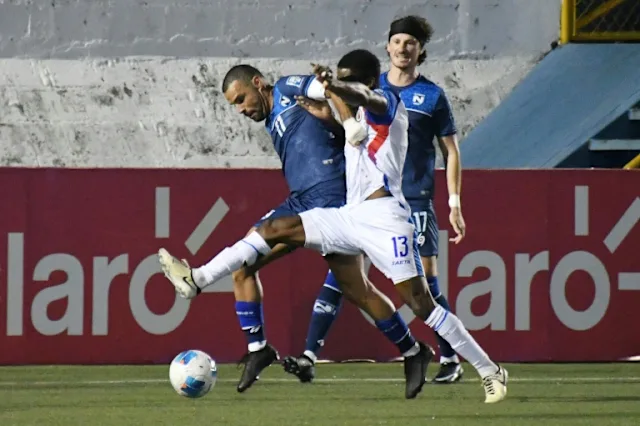Match Report: Honduras 3–0 Haiti — CONCACAF World Cup Qualifying (Oct 13, 2025)

TEGUCIGALPA — On a humid Monday night in the capital, Honduras delivered a ruthless first-half display that defined the contest and the table. Three goals in a 23-minute burst — Rigoberto Rivas on 18 minutes, Anthony “Choco” Lozano on 26, and Romell Quioto on 39 — pushed the hosts clear, and while Haiti’s second-half response restored structure and bite, the damage was already banked. CONCACAF away days are often decided by razor-thin execution; this one was, emphatically, about Honduras’ timing in the final third.
Haiti’s starting picture was a compact 4-4-2 mid-block aimed at screening vertical passes into the pocket and nudging Honduras toward the flanks. Early on, the Grenadiers tracked runners diligently and held their line high enough to spring offside traps. But second-ball control betrayed them. After a clearance on the edge of the box, Honduras recycled possession quickly to the right, Rivas split the center-backs with a diagonal run, and a measured finish made it 1–0.
Conceding altered the game state. Haiti’s wide midfielders stepped higher to contest outbound passes, leaving the back line with more grass to defend toward the corners. Honduras smelled the leverage: switch, fix, slip. On 26 minutes, Luis Palma’s disguised feed into the inside-left channel released Lozano on the defender’s blind shoulder; one touch, one strike, 2–0. Details — body shape, first touch forward, separation step — turned half-looks into clean looks.
By 39 minutes the hosts had their cushion. The action started on the right and swung left at pace; Quioto ghosted to the far post as a third-man runner and met a low pull-back with conviction. Three goals, three patterns: win the turnover, stretch the block, attack the weak-side half-space. For Haiti, the half-time talk had to reset not only positions but pulse.
The second half offered brighter notes. Substitutions injected legs on the wings, allowing Haiti to push Honduras deeper and pin fullbacks with longer carries. The counter-press sharpened: when possession was lost near the box, Haiti’s nearest three hunted immediately, recovering several second balls in promising zones. A handful of sequences produced low crosses and cut-backs, yet the finishing windows were crowded and the final ball lacked the last degree of pace or angle.
Defensively, Haiti corrected distances between the lines and protected Zone 14 far better after the interval. The single pivot screened effectively, and center-backs won more first contacts against direct service. The goalkeeper handled aerial deliveries cleanly, cutting off Honduras’ easy restarts. Still, every time the Grenadiers over-committed numbers in front of the ball, Honduras flashed danger with diagonal runs across the fullback-center-back seam.
Set pieces doubled as control levers for both sides. Haiti’s defensive scheme — zonal posts across the six with individual tags on prime aerial threats — kept free headers to a minimum. In attack, deliveries toward the penalty spot forced Honduras to defend facing their own goal, but the visitors rarely captured second phases. The next step is about occupation: staggering runs so that a midfielder arrives late rather than standing early.
Individually, several Haitians put down credible shifts. The holding midfielder read switches and disrupted vertical progressions; the left-back found a better balance between ambition and risk as the match wore on; the right winger’s inside dribbles generated a few mid-range looks and fouls. What never fully clicked was the linkage between the No. 9’s hold-up actions and the timing of the eights to burst beyond him. In a match tilted by timing, Haiti’s remained half a beat off.
Tactically, the takeaways are concrete. Against opponents who rotate play crisply and own speed in the channels, defensive communication must accelerate during side-to-side swings; rest-defense should settle in a 2+1 structure to deter diagonal cuts; and in possession, the Grenadiers need to accelerate on the second touch to avoid letting the block breathe. These are refinements, not reinventions — the identity (mid-block, purposeful verticality, selective pressing) still scales in this group.
In the standings, the loss raises the degree of difficulty but not the ceiling. Honduras’ goal difference bulges; Haiti’s remains manageable provided home dates are maximized and away performances convert into points. The math in CONCACAF is often simple: protect home soil, steal moments on the road, and own tiebreakers. A three-goal swing against you is painful, but the second-half stabilization is a template to carry forward.
Mentality matters now. The Grenadiers have shown they can travel and manage hostile environments; the challenge is to turn tidy phases into tangible xG. That means rehearsing end-zone patterns — pin-pulls, near-post darts, underlaps — until the final action is automatic. It also means recognizing when to slow a match that’s tilting, via touches that bleed tempo and throw-ins taken on your terms.
Bottom line: Tegucigalpa underlined the margins. Honduras’ first-half precision won the night; Haiti’s second-half response salvaged structure and belief. The qualifiers will present more hinges. If the Grenadiers pair their sharpened rest-defense with cleaner final-third mechanics, the road back to points — and relevance in Group C — remains open.


